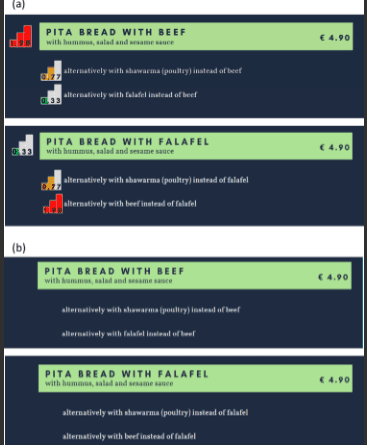Food production is a big contributor to climate change, contributing to a third of our emissions — so it’s critically important to find innovative ways to tackle its greenhouse gas emissions. In a new study, researchers found that one small tweak from restaurant menus can make a significant difference.

When we think about climate change, we tend to consider things like cars, planes, and electricity — but studies show that a large part of our greenhouse gas emissions comes from what we eat. This is largely explained by land-use change: we clear out forests to make way for farms and ranches, we manage the land in a way that improves yield at the cost of land degradation, and we raise carbon-intensive livestock (cows alone account for around 10% of our global greenhouse gas emissions).
Researchers at Julius-Maximilians-Universität Würzburg in Germany decided to explore how “soft measures” such as carbon labels and default switches in restaurants can contribute to the struggle against the climate crisis in the context of dining – following previous studies that showed how food choices affect personal carbon footprint.
“As a part of ecologically sustainable practices, restaurants can help diners reduce their carbon footprint via dish choices. To this end, changing menu design may result in considerable positive effects,” the researchers wrote. “In the past decade, there have been several attempts to reduce the footprint of dish choices in restaurants.”
Restaurants and climate change
For their study, the researchers created nine mock menus so to test two design approaches: carbon labels showing the amount of greenhouse gas emissions associated with each dish, and, for dishes with components that could be modified, setting the default component to either a low- or a high-emission option.

In six menus, the main dishes were presented with different default options: the side dish was associated either with the highest or with the lowest greenhouse gas emissions. The other three menus consisted of unitary dishes. All menus in the study were presented either with or without carbon labels for each dish option.
“The carbon labels include a number indicating the amount of CO2 that the growth and production of the dish ingredients would emit, and a color indicating whether it emits a high (red), medium (yellow), or low (green) amount of CO2, compared with the other dishes on the same menu,” Benedikt Seger, study author, told ZME Science.
The study was conducted in imaginary restaurant settings performed online with 265 participants, who didn’t really eat or pay for the dishes they ordered. This enabled the researchers to apply the labels and defaults to a broad range of restaurants, including Indian, Italian, Mexican, and Chinese restaurants, among others, the researchers explained.

Overall, the study showed that the default switches and the labels reduce the share of carbon-intensive dishes and also reduce the amount of CO2 associated with the dishes chosen. On average, the default switches reduced the carbon emissions by 300 grams of CO2 per dish, while the labels reduced emissions by 200 grams of CO2 per dish.
This has to do with the large difference between dishes, Seger said. For example, a vegan spaghetti dish on the Italian menu produced only 130 grams CO2, while the beef dishes included in our menus were associated with two or even three kilograms of CO2. The findings could also be overestimated by this being an online study, he added.
“In real restaurant situations, there will be many other factors that influence the decision, including the presence of other guests and the sight and smell of what they have ordered. Nevertheless, these clear results are quite encouraging. We invite restaurant owners who want to get involved in climate protection to try and include labels and default switches to their menus,” Seger said.
The study was published in the journal PLOS Climate.


